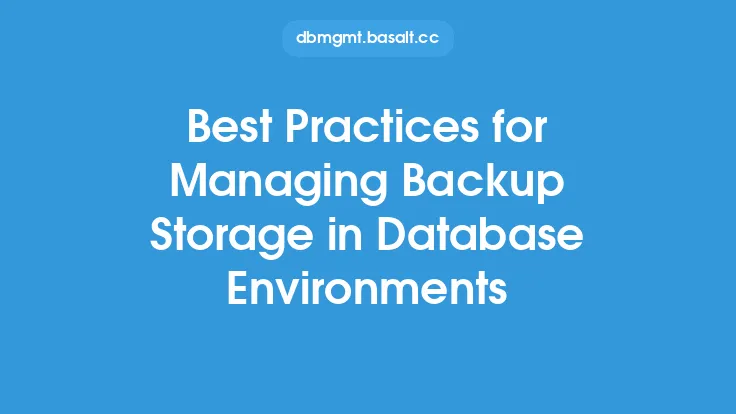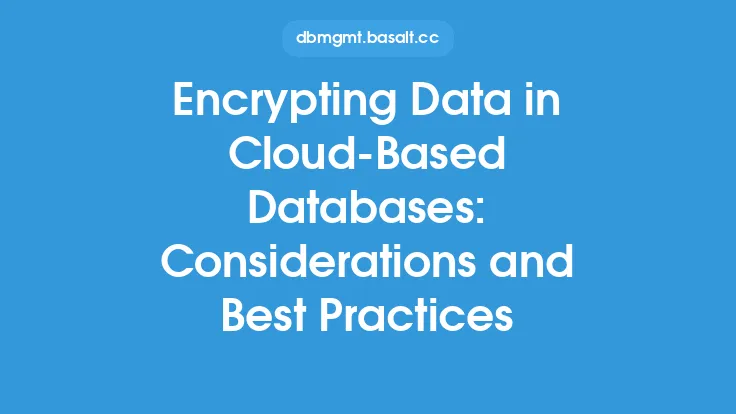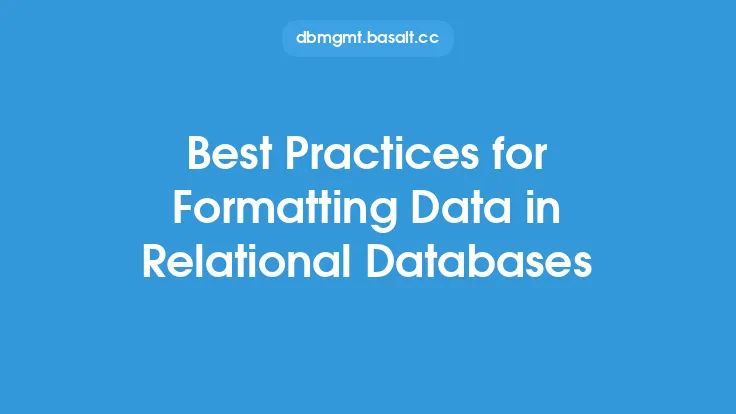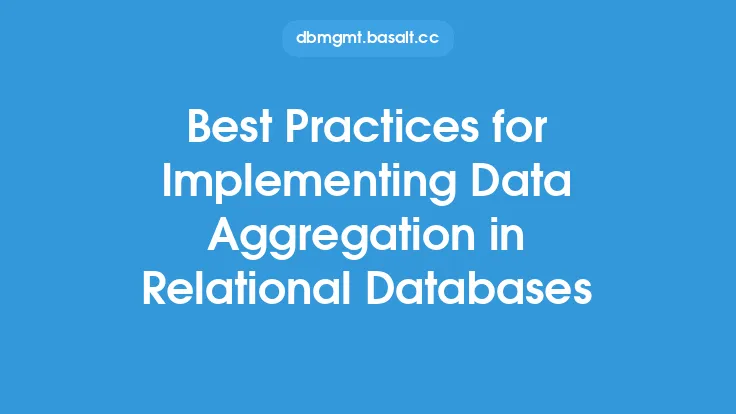Deploying databases in cloud environments requires careful planning, execution, and management to ensure optimal performance, security, and scalability. As more organizations move their databases to the cloud, it's essential to follow best practices to avoid common pitfalls and maximize the benefits of cloud-based database deployment. In this article, we'll explore the key considerations and best practices for deploying databases in cloud environments.
Planning and Design
Before deploying a database in a cloud environment, it's crucial to plan and design the architecture carefully. This involves selecting the right cloud provider, choosing the appropriate database engine, and designing the database schema. The cloud provider should be chosen based on factors such as scalability, security, and compliance with regulatory requirements. The database engine should be selected based on the specific needs of the application, such as support for transactions, data types, and querying capabilities. The database schema should be designed to optimize data storage, retrieval, and querying performance.
Security and Access Control
Security and access control are critical aspects of database deployment in cloud environments. Cloud providers offer various security features, such as encryption, firewalls, and access control lists, to protect databases from unauthorized access. It's essential to enable these features and configure them correctly to ensure the security of the database. Additionally, access control should be implemented using techniques such as role-based access control, multi-factor authentication, and least privilege access to prevent unauthorized access to the database.
Performance Optimization
Performance optimization is critical to ensure that the database can handle the workload and provide optimal response times. This involves optimizing database configuration, indexing, and querying. Database configuration parameters, such as buffer pool size, log file size, and connection pooling, should be optimized based on the workload and database size. Indexing should be used to improve query performance, and queries should be optimized using techniques such as query rewriting, indexing, and caching.
Scalability and High Availability
Scalability and high availability are essential for cloud-based databases to ensure that they can handle increasing workloads and provide continuous availability. Cloud providers offer various scalability options, such as vertical scaling, horizontal scaling, and auto-scaling, to increase the resources available to the database. High availability can be achieved using techniques such as replication, failover, and load balancing to ensure that the database is always available and can recover quickly from failures.
Backup and Recovery
Backup and recovery are critical aspects of database deployment in cloud environments to ensure that data is protected and can be recovered in case of failures or data loss. Cloud providers offer various backup and recovery options, such as automated backups, snapshots, and point-in-time recovery, to protect databases from data loss. It's essential to configure these options correctly and test them regularly to ensure that data can be recovered quickly and efficiently.
Monitoring and Maintenance
Monitoring and maintenance are essential to ensure that the database is performing optimally and to identify potential issues before they become critical. Cloud providers offer various monitoring tools, such as performance metrics, logs, and alerts, to monitor database performance and identify potential issues. Regular maintenance tasks, such as software updates, patching, and configuration changes, should be performed to ensure that the database is up-to-date and secure.
Cost Optimization
Cost optimization is critical to ensure that the database deployment is cost-effective and aligns with the organization's budget. Cloud providers offer various pricing models, such as pay-as-you-go, reserved instances, and spot instances, to optimize costs. It's essential to choose the right pricing model based on the workload and database size to minimize costs. Additionally, cost optimization techniques, such as right-sizing resources, using spot instances, and optimizing storage, should be used to minimize costs.
Conclusion
Deploying databases in cloud environments requires careful planning, execution, and management to ensure optimal performance, security, and scalability. By following best practices, such as planning and design, security and access control, performance optimization, scalability and high availability, backup and recovery, monitoring and maintenance, and cost optimization, organizations can ensure that their cloud-based databases are deployed successfully and provide optimal benefits. As cloud computing continues to evolve, it's essential to stay up-to-date with the latest trends and best practices to ensure that database deployments are optimized for the cloud.





